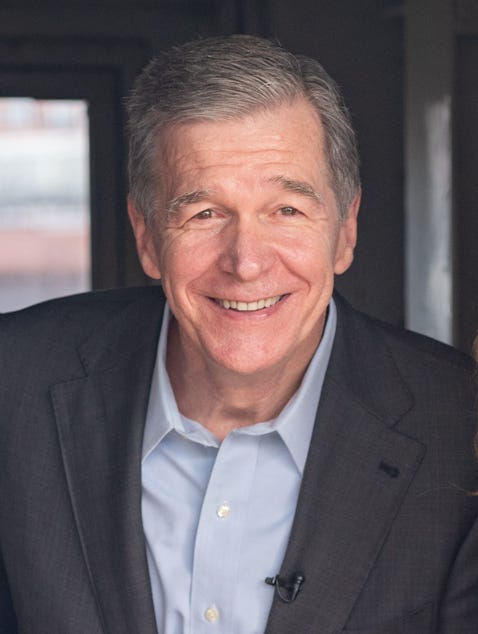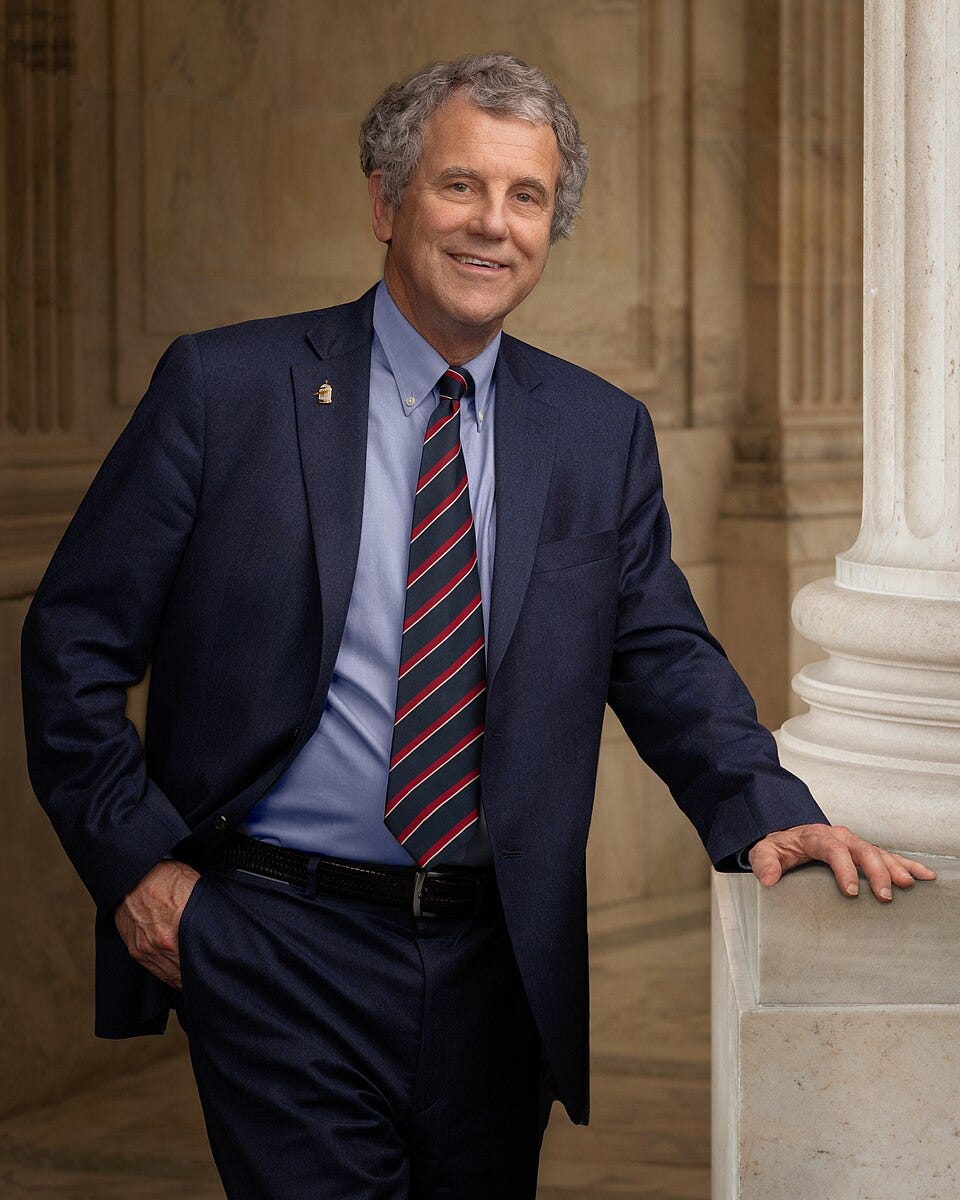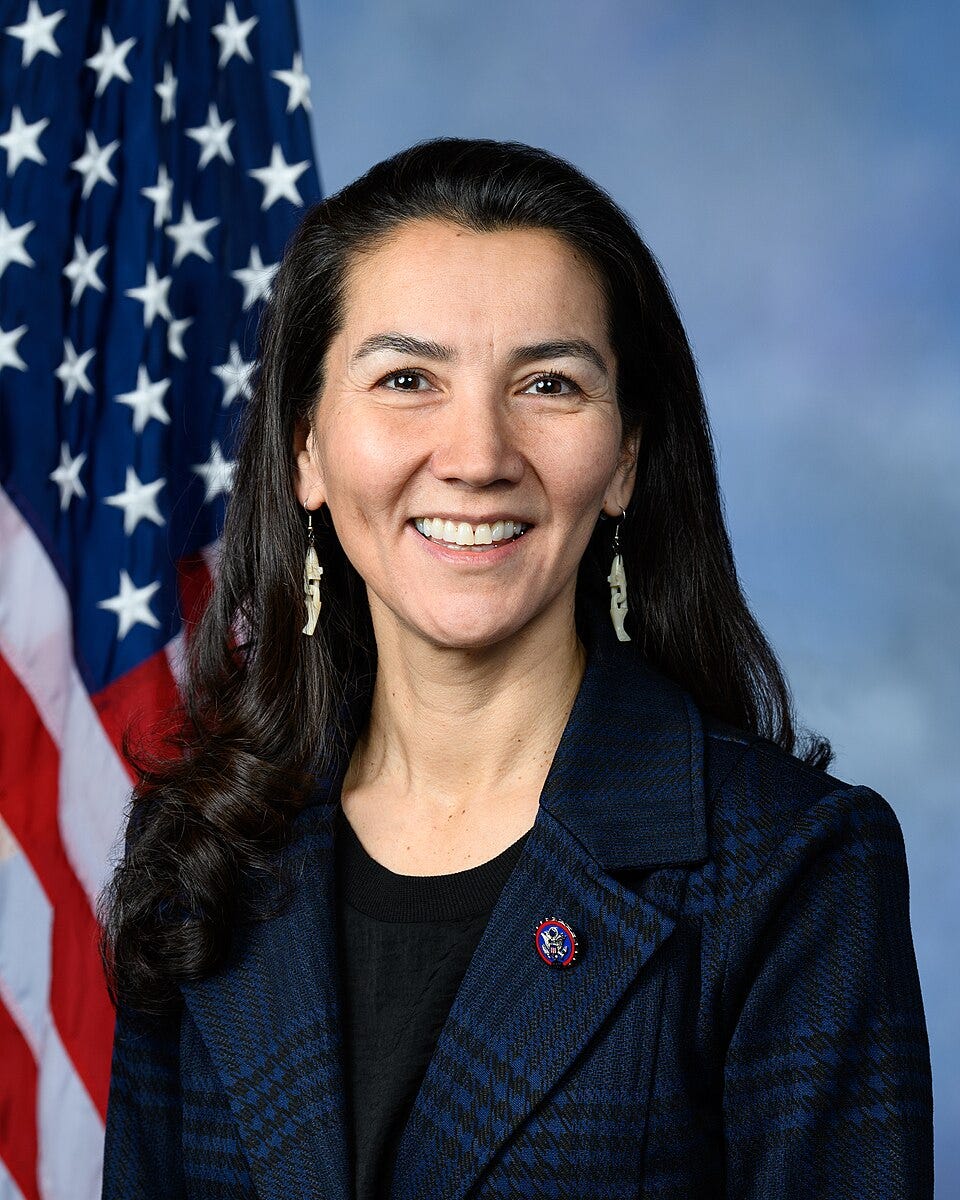The Senate is now officially in play
With Republican enthusiasm for Trump dropping and great Democrats running, the Senate is up for grabs
The conventional wisdom at the start of this election cycle was that Democrats have a real shot at taking back the House, but no shot at all in taking back the Senate. Even with the Republican redistricting frenzy, the House is still very much in range for a Democratic takeover. But the combination of significant weakening in Trump’s approval rating among Republicans combined with some really exciting Senate candidates deciding to run within the last few weeks has changed the equation in the Senate.
Midterms are decided by who turns out to vote
Recent polling trends are showing Republican voters are losing their previously near unanimous support of Donald Trump. One example, a recent Axios poll showing that Trump’s approval ratings among Republicans have gone from 92% in January to just 83% in August. His approval with Independents is falling as well, which is great news, but the big news in terms of the 2026 elections is the Republican approval rating, because midterm elections are determined first and foremost by who shows up to vote. Of course swing voters matter as well, but less engaged swing voters don’t show up in as big a way in the midterms as partisan voters. Midterms are mostly decided by which set of partisans are most motivated to vote.
A quick review of the biggest midterm landslides in the last three decades show this very well:
In 1994, Democrats were discouraged about Clinton’s failure to pass a health care bill and his support of NAFTA, while Republicans were fired up to oppose him. Democrats lost 52 seats in the House and 8 in the Senate.
In 2006, Republicans were discouraged by the incompetence and scandals coming from their party, and Democrats were fired up to oppose the Iraq War, and Democrats picked up 31 seats
In 2010, Democrats were discouraged by Obama letting Wall Street off the hook for the financial crisis while not helping workers much, and Republicans were fired up to oppose Obamacare. We lost 63 House seats that year.
In 2018, Democrats were more fired up to turn out in opposition to Trump than his troops were to support him, there was record turnout for a midterm, and we picked up 40 House seats.
While there is not enthusiasm this year for the Democratic Party, there is plenty of passion from Democrats to stand up to Trump, so we are likely to see a high turnout by Democrats. If Republicans' support and enthusiasm for Trump wanes, as polls are starting to indicate, it could turn the midterms into a landslide for the Democratic Party.
And in a strong Democratic election year, we are now well positioned to take back the Senate.
The Democratic candidates putting the Senate in play
Candidates with outstanding credentials and talent have been stepping up to the plate to challenge Republican incumbents in states that are winnable:
1) Roy Cooper, North Carolina
In North Carolina, popular former Governor Roy Cooper, who was elected Attorney General four times and Governor twice while never suffering a loss, is running for the open Senate seat. The likely Republican nominee is Michael Whatley, who was a big supporter of far right flamethrower Mark Robinson in last year’s Governor’s race.
2) Multiple Candidates, Iowa
In Iowa, where Jodi Ernst famously responded to a question about people dying from Medicaid cuts by saying “we’re all going to die”, Democrats are feeling optimistic about having a real shot at beating her. There are now four different candidates running. All of them are talented, appealing candidates with strong bases of natural support, good bios, and real potential to run a strong race.
3) Sherrod Brown, Ohio
In the latest bit of really truly great candidate news, Sherrod Brown in Ohio decided to run for the Senate seat that will fill out the rest of JD Vance’ term, who of course resigned from the seat when he won the Vice Presidency. Sherrod out-performed Kamala Harris by more than 8 points last year, and in any kind of a decent Democratic year, he will win this seat.
Personal favor: Sherrod is my favorite candidate of the year, I am so excited about his running, no one in my career in politics has ever fought harder for working people than Sherrod – he represents what the Democratic Party should be. Please give his campaign a healthy contribution.
4) Dan Osborn, Nebraska
In Nebraska, working class Independent candidate Dan Osborn, who came out of nowhere to almost upset Republican incumbent Deb Fischer last year, is running again. This time he is running against billionaire incumbent Pete Ricketts. This is a red state, and Dan is running against a guy with an unlimited budget, but if he can raise the money to tell his story of a regular working guy running against Daddy Warbucks, he can win.
5) Multiple Candidates, Maine
And speaking of outsiders, there is a fascinating new development in Maine, which is a Democratic state that Harris and every other Democratic presidential candidate has won since 1988. Collins has survived election after election by positioning herself as a moderate. However, voters there are reacting poorly to Trump, and Collins’ approval rating is 38-54% negative, the lowest it has ever been.
Governor Janet Mills is considering a run, but even if she doesn’t there are other potential candidates who could run a strong race. Like this guy, who just announced and is out with an amazing launch video.
There are two other states where there are interesting dynamics as well.
6) Mary Peltola, Alaska
In Alaska, if Mary Peltola decides to run, we are definitely in the hunt for this Senate seat. Peltola narrowly won the special election for the single congressional seat Alaska has in the middle of the last cycle, and then narrowly lost in November. In a 2026 midterm where Trump is not turning out Republican presidential cycle voters, one that that is shaping up to be a more Democratic election year, Peltola would have a serious chance to win here.
Alaska is now more of a swing state in non-persidential races than most people realize. Anchorage is now more than half the state’s population, and like most growing urban centers is trending more Democratic. Several Democrats and Independents have won statewide races in recent years, and coalitions of Democrats and Independents have controlled state legislative chambers multiple times in recent years.
7) Colin Allred (or another candidate), Texas
Texas is the last state that might end up being in play – if brazenly corrupt, raveningly far right Ken Paxton wins the primary.
I am less optimistic on this one. Paxton is currently leading in the polls in the primary race but he has bucketfuls of baggage, and Cornyn will have a huge amount of money to take advantage of that baggage.
The other thing that makes me more pessimistic about Texas is that the anointed Democratic frontrunner, Colin Allred, has the most milquetoast, boring, mushy message imaginable, the same one that caused him to lose by almost 10 points to widely unpopular Ted Cruz. For a Democratic candidate to win Texas, they are going to need to be an unreconstructed LBJ/Ann Richards/Jim Hightower style populist.
So count me as a skeptic on winning Texas (in this otherwise optimistic column on Senate races). Having said that, I could be wrong, and no one would be happier than me if I was. Maybe Paxton wins his primary; maybe Allred gets beat in the primary, or maybe he gets a better message; maybe Texas Democrats finally figure out how to effectively organize and communicate to Texas Hispanics. If any of these things were to happen, you could add a 7th state to our list of Senate takeback possibilities. It wouldn’t be the first time I was wrong, but it might be the best.
Yeah, it’s tough, but don’t write if off: the Senate is in play
Winning the Senate will be tough for sure. We have to make sure we keep all the states we currently hold, for one thing. And I will be the first to admit that the group of states listed above isn’t easy to win. North Carolina is where we have the best chance, and we haven’t won a Senate or presidential race there for quite a while – although we have won a lot of other statewide races, and all of our recent losses have been close.
Maine is the most Democratic state on the list, but Susan Collins has always been tough to beat. Her low approval ratings give me hope, though.
The other races on the list are in tough, red states. All will be a big challenge, but all have unique circumstances in play that make the win possible. Sherrod Brown is a game changer in Ohio; so is Dan Osborn in Nebraska. Joni “we’re all gonna die” Ernst is in serious trouble. Mary Peltola would give us a great shot at winning Alaska.
Most importantly, if I’m right that 2026 will be a Democratic year, with Republican turnout depressed and Democrats coming out in big numbers, each of these races becomes a lot more doable.
And think about what we get if we win the Senate. No more right wing extremist judges put on the bench. No more lunatic Trump appointees for important Cabinet and agency positions. It would be a much bigger check on Trump’s power than winning back the House, as important as that would be.
There is a tendency in politics for donors and groups to spend most of their resources on whatever they think is most winnable. So far this cycle, the betting has all been on retaking the House, for good reason – the House is a better bet than the Senate. But with these great candidates running for office, the dynamics in the Senate have changed in a big way.
And this isn’t either/or. Elections tend to move toward one party or the other. If we build a national narrative about health care, inflation, and Trump going too far, we can win both the House and the Senate. In both the 1994 and 2006 midterms, a lot of people thought the House would change, but nobody thought the Senate would. The same thing can happen in 2026.





I’ve been thinking about this a lot. And gerrymandering can’t stop it! So we’d need to hold all of our current seats and flip 4?
Great article! A bit of hope! Thank you Jess! Thank you Mike!